But the geeks need not despair because it is a modern, cutting edge, yet weird way of cooking meat used by top experimental chefs like Heston Blumenthal.
It is known as sous vide, which means under a vacuum in French.
In sous vide cooking the meat is vacuum packed in a plastic bag before being left in a temperature regulated water bath for at least 45 minutes.
It is then finished by being seared over a hot barbecue or in a hot frying pan.
Convection evenly distributes the heat of the water bath into the meat so the centre and edges all reach the same temperature and are evenly cooked.
The temperature of the water bath dictates how well the meat is cooked. For instance a steak kept at 120°F (50°C) will be rare and one cooked at 131°F- 137°F (55°C-58.3°C) will be medium rare.
A steak cooked this way will be pink from edge to edge, rather than just in the centre, like a normally cooked steak.
Traditionally cooked steaks are only pink in the centre because ovens and grills are too hot. This means that when the centre of a steak is medium rare the outer layers are overcooked.
Normally, to cook sous vide you require a special temperature controlled water bath and a vacuum sealing machine which will cost upwards of £349.
Fortunately there is a way to get the same results with meat for under £28.
Instructions
You will need: An insulated cool-box (£12.99 from Poundstretcher), a digital remote probe style oven thermometer (£13.75 from E Bay) and large ziplock bags (£1 for 30 from Poundstretcher). An optional aquarium pump (£19.80 online from Zooplus) can also be added.
Almost fill the cool-box up with hot water from the tap while monitoring the
temperature of the water with the thermometer.
To cook a medium rare steak you want to start with water at 134°F (56.7°C) in the cooler. The water from a hot tap may be sufficiently hot, if not add some boiling water from a kettle. If it is too hot add cold water.
An aquarium pump can be added to the cooler to circulate the water. This method works well without a pump, though using one ensures the heat is evenly distributed throughout the water.
Season the steaks with salt and pepper and place each individually into a ziplock bag.
Seal each bag individually by slowly submerging them bottom first whilst keeping the mouth of the bag open and out of the water.
As the bag sinks into the water the air is pushed out. Once most of the air is out and the steak is submerged seal the ziplock.
The bag can then be dropped into the water, but they have a tendency to leak. This can be avoided by putting the sealed top of the bag over the lip of the cool-box and securing it in place with the lid, just ensure that all the meat remains submerged.
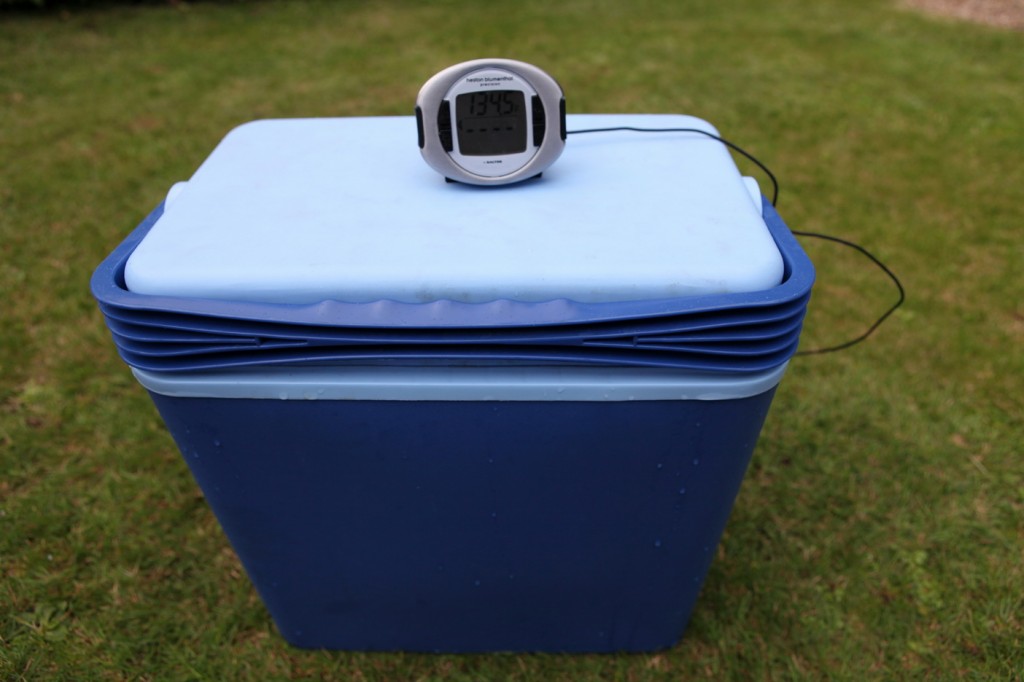
Picture 5 – Cool-box with steak in bag hanging inside, lid on and thermometer monitoring the temperature with probe.
The temperature will slowly drop, when it gets down to 131°F (55°C) slowly add some boiling water from a kettle until the temperature rises back up to 134°F (56.7°C). If you do not have a pump stir the water in the cooler with a wooden spoon.
While adding the hot water it is best to temporarily remove the food from the cooler to keep the boiling water from damaging the plastic bags.
Regulate the water temperature this way throughout cooking. Whilst the steaks are cooking fire up the barbecue so that it is really hot. Steak should be cooked for at least 45 minutes to ensure it is fully cooked.
If there are delays, such as rain showers or guests arriving late, it is no problem because the steaks can be held at 131°F-134°F (55°C-56.7°C)in the water bath for as long as needed without becoming overcooked.
The longer the meat cooks in the water the more tender it becomes and after a few hours a tastier yet tougher cut such as rump will keep its taste and be as tender as fillet steak.
Just ensure the water is kept at 131°F (55°C) or higher throughout cooking to prevent pathogens developing.
When ready remove the steaks from the bags and pat them down to remove any moisture.When they come out of the bags the steaks will look grey and fairly unappetizing.
Season the steak again with pepper and salt if wanted and quickly sear them over a very hot barbecue until the outside is nice and browned (about 45 seconds each side depending on the heat of the barbecue).
If it is not barbecue weather the steak can be seared in a very hot frying pan with a tablespoon of cooking oil.
The idea is not to cook the inside of the meat anymore but to just brown the outside and cause the Maillard reaction to happen.
This adds flavours and textures which sous vide cooking cannot.
Steaks cooked this way will be perfectly medium rare throughout except for a browned crust. Because less water has evaporated during cooking they are juicier than normal.
Thick burgers can also be cooked this way, they are crusty on the outside with a juicy red centre.
Food cooked sous vide should be eaten immediately. If you want to eat it later it is essential to quickly cool the food, because if it cools too slowly pathogenic spores can develop into dangerous bacteria.
Do this by removing the meat from the hot water bath and, still in its ziplock bag, submerge it in a bowl of iced water that is at least half ice.
Leave it there for at least an hour or until the meat has cooled all the waythrough. It can then be stored in a fridge or frozen.
Chicken breasts can be cooked sous vide and are a revelation. They are unbelievably moist and plump with a melt in the mouth texture that traditionally cooked chicken never has.
Chicken has to be cooked at 158°F (70°C) for at least 45 minutes. Like steak it can be grilled or fried afterwards for a crispy skin.
If cooking chicken breasts and steak cook the chicken breasts first for 45 minutes at 140°F (60°C). Keep the chicken in the water bath and reduce its temperature to 134°F (56.7°C), then add the steaks and cook them as described.
Both the chicken and the steak can be removed when needed.
For more information Douglas Baldwin has an excellent and informative website about sous vide cooking.

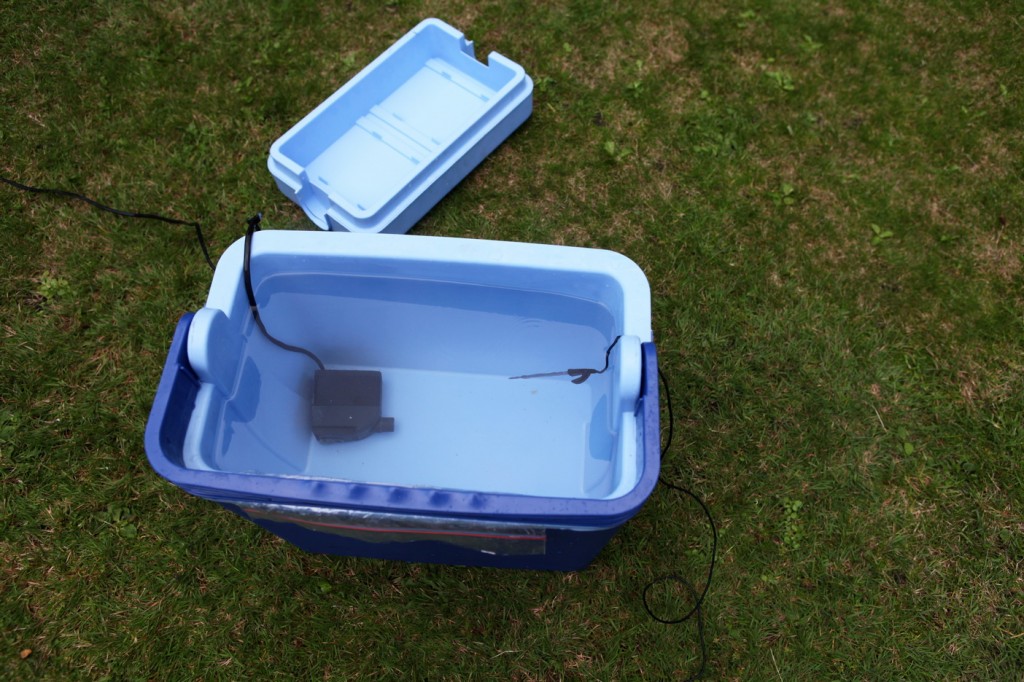
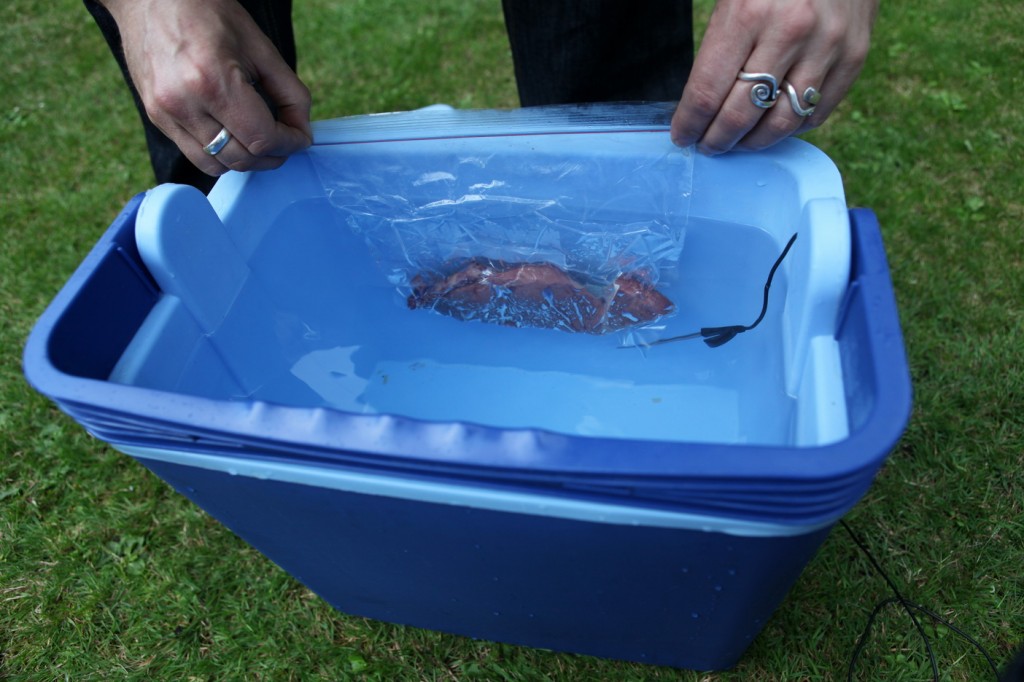
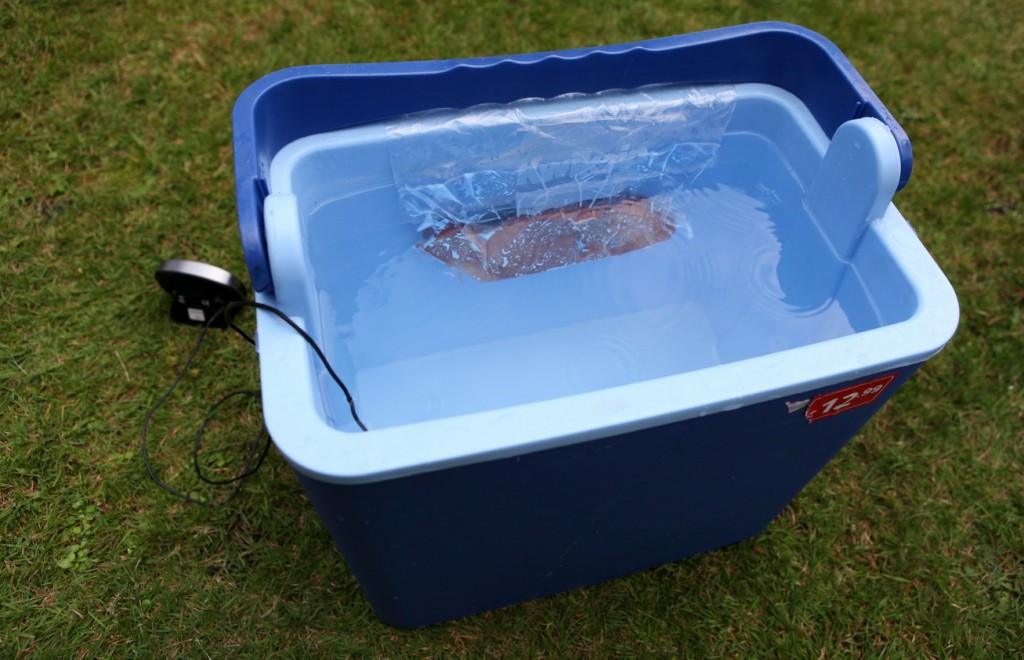
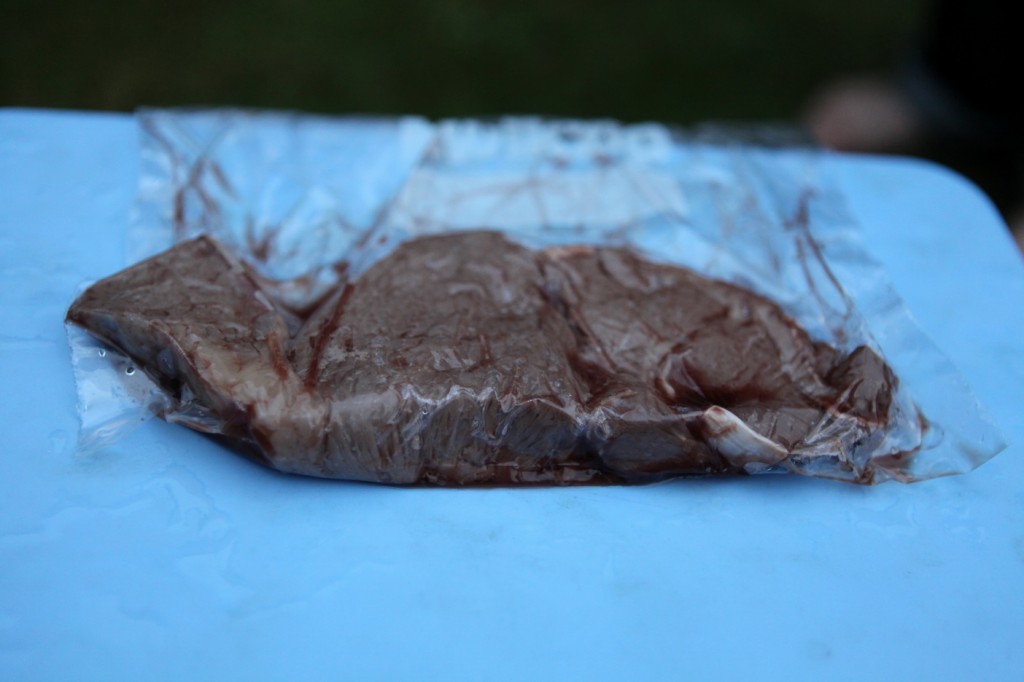
Comments are closed, but trackbacks and pingbacks are open.